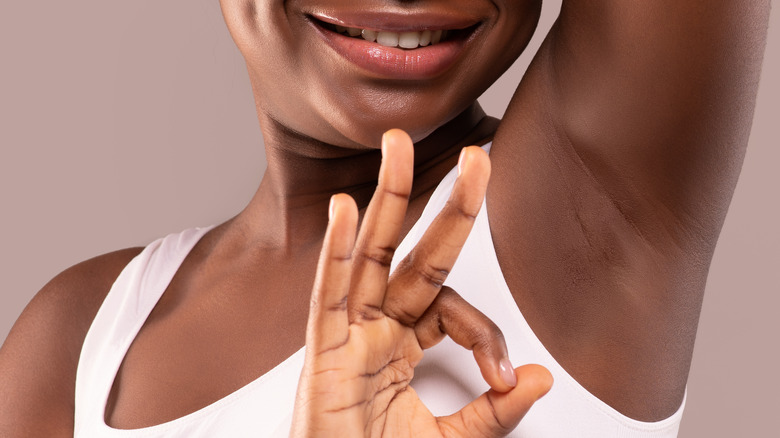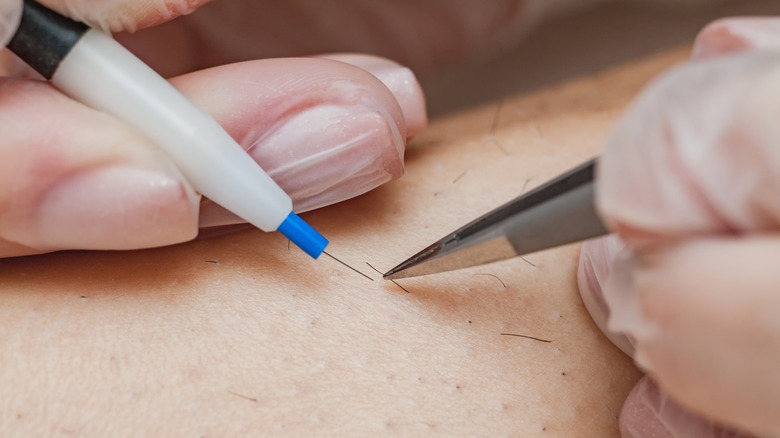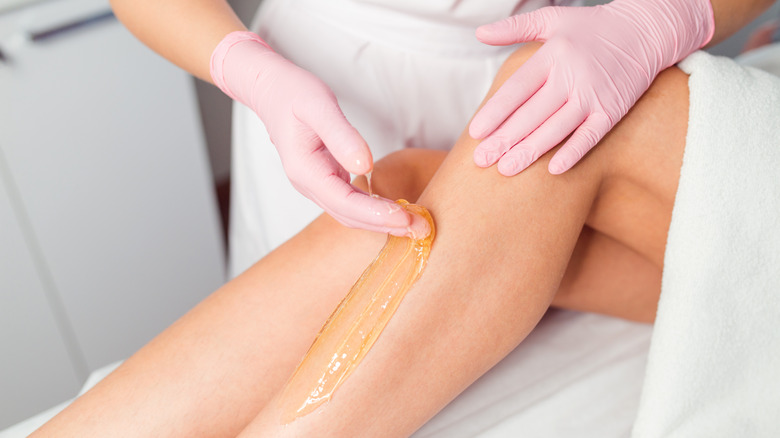Which Hair Removal Method Staves Off Regrowth The Longest?
While some might be on the bandwagon of letting their body hair grow out, others may prefer to be entirely hair-free. If you're in favor of being able to feel your smooth, silky skin sans body hair, you likely know the struggle of keeping it at bay. Even the sharpest razor blades can only do so much when it comes to remaining body hair-free.
As MedlinePlus explains, women typically have finer hair than men in areas, such as their chin, abdomen, and back. This is because they produce lower levels of the male hormone known as androgen. However, that doesn't mean that women are completely hair-free — leg shaving, for instance, is a common practice for this reason. Other methods of hair removal, such as waxing and tweezing, are also used by those who prefer to be silky smooth in particular areas of their body.
That being said, hair removal can be a time-consuming and costly process. For instance, Forbes notes that laser hair removal, in particular, can be hundreds of dollars per session. Even just the cost of razors, blades, and shaving cream alone can add up over time. This doesn't include the amount of time it takes to actually remove the body hair. If you're seeking the most effective hair removal method to stave off regrowth for as long as possible, let's take a look at some of the options.
Electrolysis, laser hair removal, and waxing
Body hair, on average, grows out to its full length within a month, according to Healthline. Factors, such as genetics, medications, and nutrition, all play a role in how long it takes for your body hair to grow.
If you're interested in removing your hair for good, electrolysis is your best option. My Imperfect Life explains that this process works by using an electrified probe to damage the root of each hair follicle to the point that hair cannot regrow. "Electrolysis offers permanent hair removal, but it takes several 15- to 30-minute sessions as each hair follicle needs to be targeted at different points of the hair growth cycle," skincare biochemist Elle MacLeman tells the publication. If the word "permanent" scares you a bit, you may want to consider laser hair removal instead. This process, which works best on dark-pigmented hair, can prevent regrowth for up to a full year. Similar to electrolysis, though, it requires follow-up appointments, which can add up in cost.
If you have a high pain threshold, waxing might be a more affordable, effective option for you. Best of all, it can be done at home if you don't want to book an appointment with an aesthetician. Waxing involves removing hair at the root, which is why the results can last for four weeks or longer. If you're unconfident in waxing at home, though, leave it to a professional to avoid any painful mistakes.
Sugaring, shaving, and depilatory creams
If you're intrigued by the potential results that waxing can offer but have a low pain threshold, sugaring might be for you. As the Cleveland Clinic notes, many people turn to sugaring because they claim it's less painful than waxing, but offers similar results. The primary difference between waxing and sugaring is that, during the waxing process, the wax (and hair) is removed in the opposite direction of growth. A sugaring technician removes hair in the same direction of growth. Instead of wax, a syrup consisting of ingredients like sugar, water, or lemon is used for sugaring. This process usually results in about three weeks of smooth skin.
For pain-free hair removal, don't rule out using a depilatory cream. These products work by weakening hair strands to the point that they can be wiped away. However, they typically only keep hair regrowth at bay for a few days. If you're considering falling back on your razor, there are a couple of ways you can get a closer shave. Exfoliating before shaving, using shaving cream instead of soap, and shaving with cool water can all be beneficial. Never shave without hydrating your skin first, as doing so can increase your risk of razor burn and cuts.


